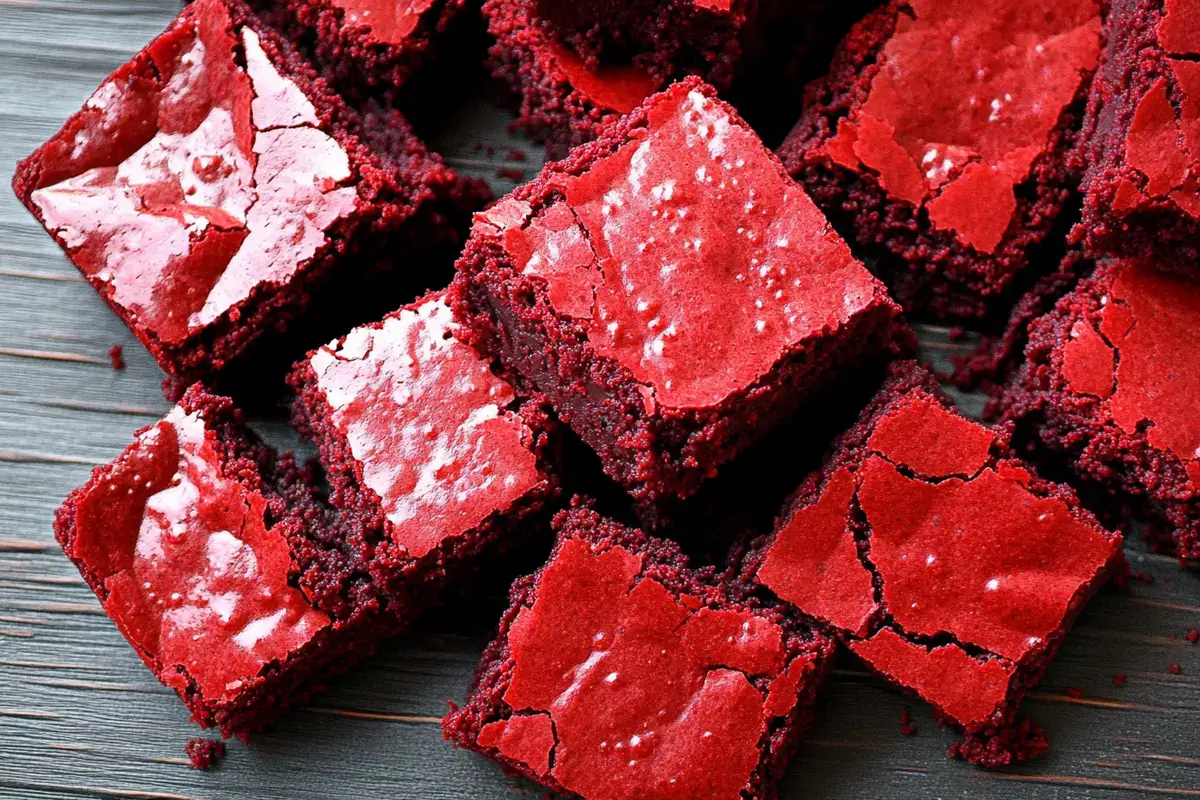Hey there, fellow baking enthusiasts! It’s Jessika here from Boldy Recipes, and today I’m diving into one of my absolute favorite dessert mashups red velvet brownies. After years of perfecting this recipe in my kitchen and getting countless questions from you wonderful readers, I wanted to create the ultimate guide explaining exactly what these beauties are and why they deserve a spot in your baking rotation.
Understanding Red Velvet Brownies: The Perfect Hybrid Dessert
Red velvet brownies are a decadent fusion dessert that combines the best characteristics of traditional red velvet cake with the dense, fudgy texture of classic brownies. Think of them as red velvet cake’s richer, more indulgent cousin.
What Makes Them Unique?
Unlike regular brownies that rely solely on chocolate for flavor, red velvet brownies feature:
The Signature Cocoa Tang: A subtle cocoa flavor (not overpowering chocolate) combined with a slight tanginess from buttermilk or vinegar this is what sets red velvet apart from any other dessert.
That Iconic Red Color: The vibrant red hue traditionally comes from red food coloring, though some bakers use natural alternatives like beet juice.
Fudgy, Dense Texture: While red velvet cake is light and fluffy, red velvet brownies maintain that signature brownie density we all crave.
Cream Cheese Element: Many recipes incorporate a cream cheese swirl or frosting, creating a stunning marble effect and adding tangy richness.
The Flavor Profile
From my experience baking these hundreds of times, I’d describe the flavor as:
- Mildly chocolate : not as intense as traditional brownies
- Slightly tangy : from the buttermilk and vinegar combo
- Rich and buttery : with a velvety mouthfeel (hence the “velvet” name)
- Sweet but balanced : especially when paired with cream cheese
The cocoa content is typically around 2-3 tablespoons for a standard batch, compared to ¾ cup or more in regular brownies.
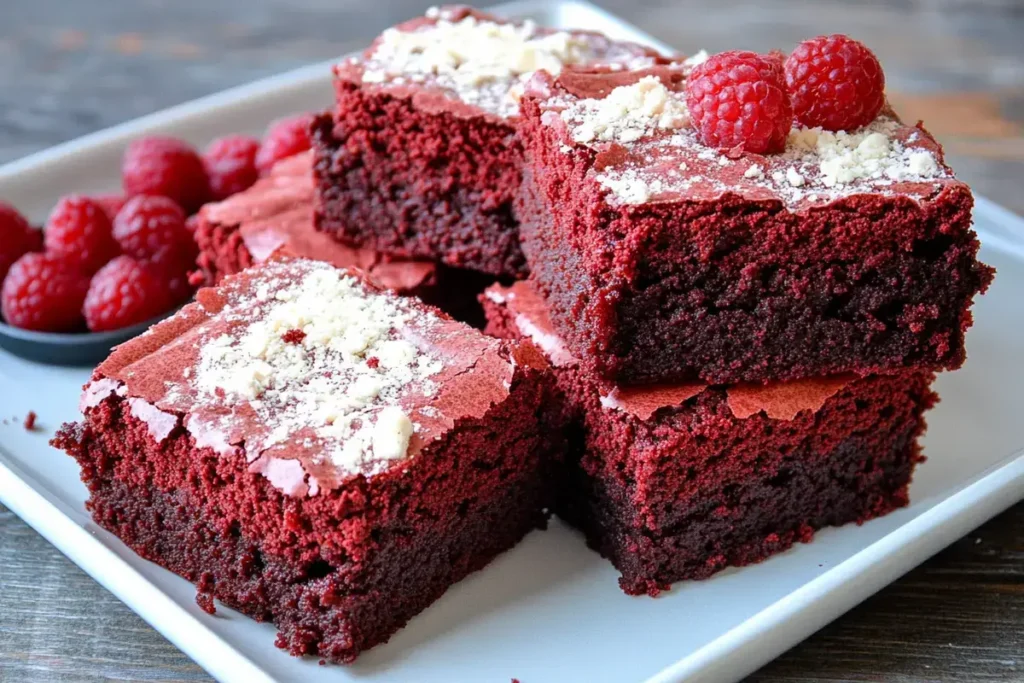
Key Ingredients That Define Red Velvet Brownies
Essential Components:
- Cocoa Powder (not chocolate bars): Usually Dutch-process for that authentic red velvet flavor
- Buttermilk or Vinegar: Creates the characteristic tang
- Red Food Coloring: For that unmistakable appearance
- Cream Cheese: Either swirled in or as frosting
- Butter and Sugar: The foundation of that fudgy texture
What They DON’T Have:
- Large amounts of melted chocolate (unlike traditional brownies)
- Baking powder as the primary leavener
- Dark, chocolatey color
Red Velvet Brownies vs. Regular Brownies: The Real Difference
After teaching baking classes across the country, this is the question I get most often. Here’s the breakdown:
| Feature | Red Velvet Brownies | Traditional Brownies |
|---|---|---|
| Chocolate Intensity | Mild, subtle | Rich, deep |
| Color | Bright red | Dark brown |
| Flavor Notes | Tangy, buttery | Chocolatey, sweet |
| Texture | Fudgy-cakey hybrid | Fudgy or cakey |
| Signature Add-in | Cream cheese | Chocolate chips/nuts |
Why Bakers Love Them?
In my professional opinion, red velvet brownies have earned their popularity because:
Visual Appeal: They’re Instagram-worthy before Instagram even existed! That red color with white cream cheese swirl makes them perfect for holidays, Valentine’s Day, or any celebration.
Crowd-Pleaser Factor: They appeal to both cake lovers and brownie enthusiasts – it’s truly the best of both worlds.
Unique Without Being Complicated: The flavor is distinctive yet familiar, making them approachable for all skill levels.
Versatile: Dress them up with cream cheese frosting for special occasions or enjoy them plain for an everyday treat.
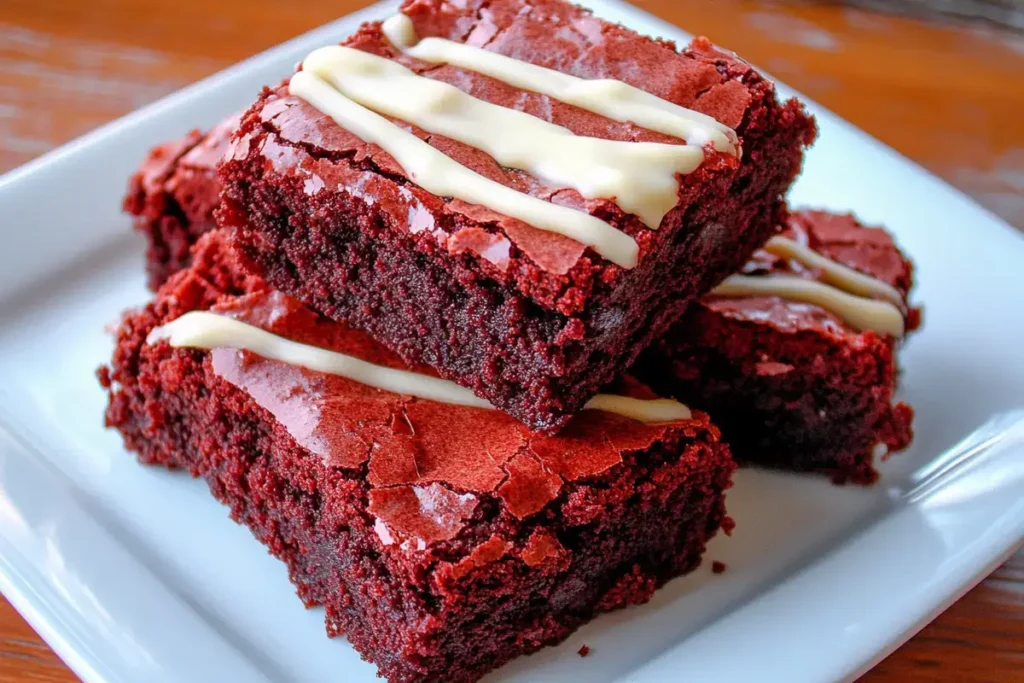
Common Mistakes to Avoid
Through my years of testing and reader feedback, here are the pitfalls I see most often:
❌ Using too much cocoa – this turns them into chocolate brownies
❌ Skipping the acid component – you’ll miss that signature tang
❌ Overbaking – they should be fudgy, not cake-like
❌ Using gel food coloring incorrectly – liquid works better for even distribution
When to Serve Red Velvet Brownies?
These beauties shine at:
- Valentine’s Day celebrations (that red color is perfect!)
- Christmas dessert tables (red and white theme)
- Birthday parties (especially for red velvet fans)
- Bake sales (they stand out visually)
- Any Tuesday (because you deserve it!)
My Professional Take
After developing countless recipes for Boldy Recipes and serving these at pop-ups from New York to California, I genuinely believe red velvet brownies are an essential recipe in every baker’s arsenal. They’re conversation starters, they photograph beautifully, and most importantly – they taste incredible.
The key is understanding they’re NOT just chocolate brownies with food coloring. They’re a carefully balanced dessert where the tang, subtle cocoa, and cream cheese work together to create something entirely unique.
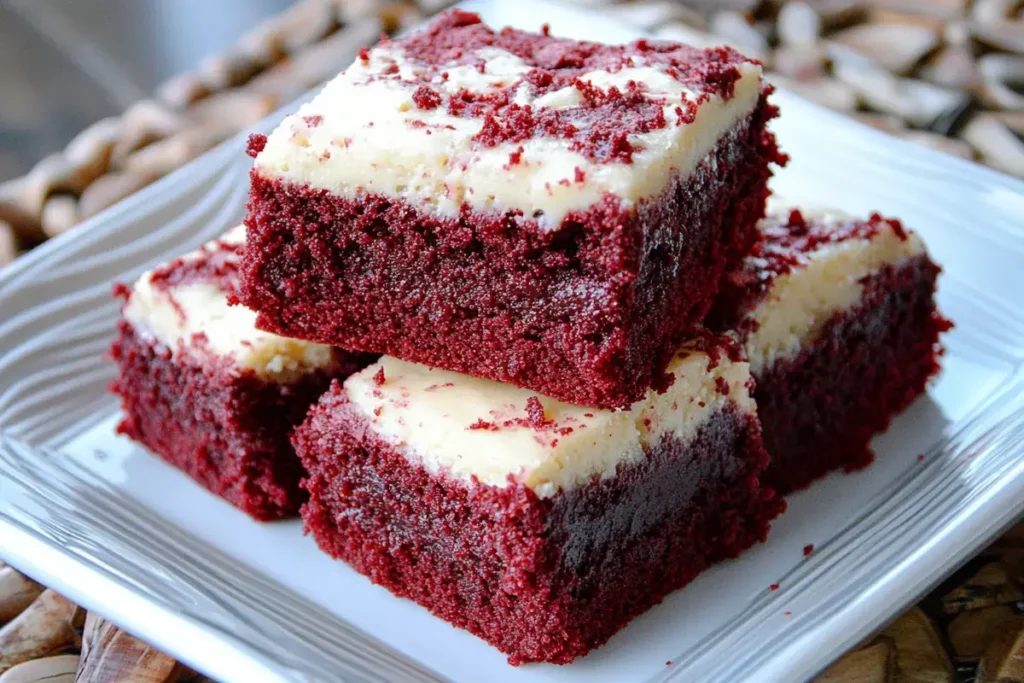
Frequently Asked Questions
Do red velvet brownies taste like chocolate brownies?
No, they have a much milder cocoa flavor with a distinctive tangy note. The chocolate is subtle – think of it as a supporting character rather than the star. Traditional brownies are intensely chocolatey, while red velvet brownies offer a more complex, balanced flavor profile.
Can I make red velvet brownies without food coloring?
Absolutely! While they won’t have that signature red color, the flavor will still be authentic. You can use natural alternatives like beet powder or beet juice, though they’ll create more of a burgundy shade. Some bakers skip coloring entirely for a “naked” red velvet brownie.
What’s the difference between red velvet cake and red velvet brownies?
The main difference is texture. Red velvet cake is light, fluffy, and typically layered with cream cheese frosting. Red velvet brownies are dense, fudgy, and often have cream cheese swirled throughout or on top. The flavor base is similar, but brownies are richer and more indulgent.
Do I need buttermilk for red velvet brownies?
Buttermilk is traditional and preferred for authentic flavor, but you can make a substitute by adding 1 tablespoon of white vinegar or lemon juice to 1 cup of regular milk. Let it sit for 5 minutes before using. I’ve tested both methods extensively, and while real buttermilk is best, the substitute works in a pinch.
How do you know when red velvet brownies are done?
Look for edges that pull slightly away from the pan and a toothpick inserted in the center that comes out with a few moist crumbs (not wet batter). Because of the red color, you can’t judge doneness by color like regular brownies. They typically need 25-30 minutes at 350°F, but every oven is different.
Can red velvet brownies be frozen?
Yes! They freeze beautifully for up to 3 months. I recommend wrapping them individually in plastic wrap, then placing them in a freezer-safe container. Thaw at room temperature for about an hour before serving. If they have cream cheese frosting, freeze them unwrapped first until solid, then wrap to prevent the frosting from sticking.
Why are my red velvet brownies turning brown?
This usually happens when: 1) You’ve used too much cocoa powder, 2) You’ve overbaked them (the color darkens), or 3) Your food coloring wasn’t evenly distributed. Use the amount of coloring the recipe calls for and make sure it’s fully incorporated into your batter before baking.
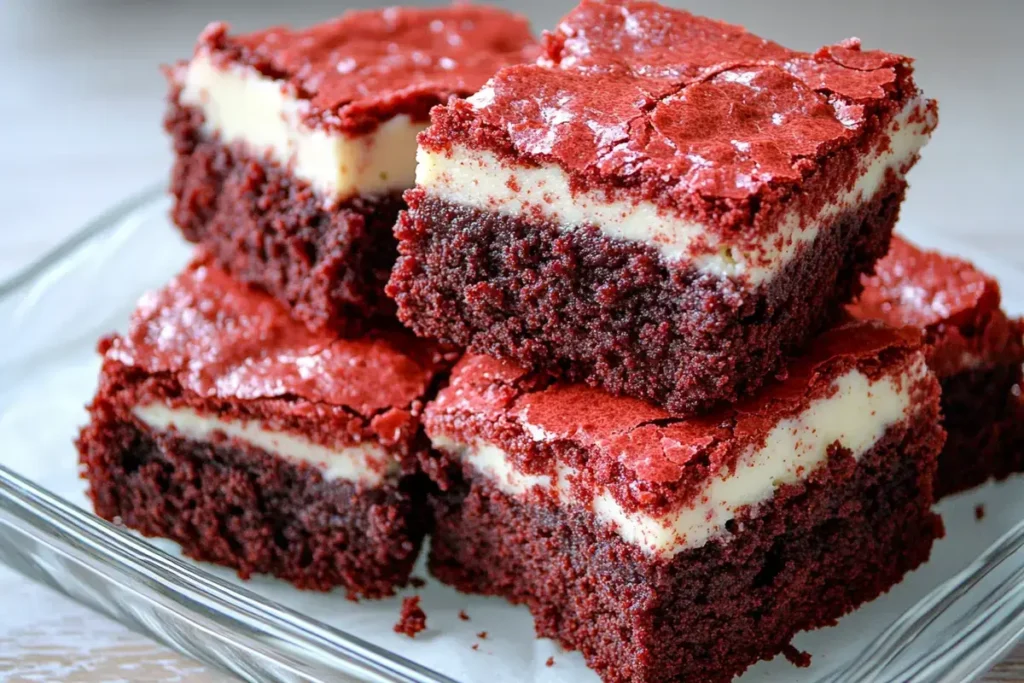
Happy baking, friends! If you try making red velvet brownies, tag me @boldyrecipes , I love seeing your creations!
Jessika

